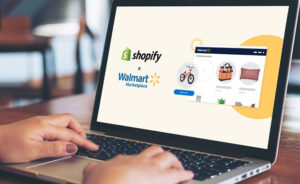Versium on Tuesday announced a partnership with LiveRamp, an Axiom company, to launch artificial intelligence-powered B2B audience segments,as part of a new business-to-business data management platform.
The partnership will let companies perform online targeting of offline business professional data that often is housed within their own CRM systems.
LiveRamp customers will get access to Versium’s modeling engine to create custom audiences optimized for their likelihood of engagement.
Versium will also offer unique business and consumer audiences built from its extensive LifeData Warehouse, which contains more than 1.5 trillion proprietary consumer and business professional behavioral data attributes, including social-graphic details, real-time event-based data, purchase interests, financial information, activities, skills and demographics.
When those attributes are matched to an enterprise’s internal data and used in Versium’s machine learning models, clients improve customer acquisition, retention and cross-sell and upsell marketing activities, the company said.
The partnership will “extend companies’ reach and ability to target business decision makers digitally leveraging our LifeData Warehouse,” Versium CEO Chris Matty told the E-Commerce Times.
“LiveRamp provides identity resolution so I can associate things like cookies with individuals,” noted Rebecca Wettemann, VP of research at Nucleus Research.
“Versium has the data on all those individuals as well as predictive analytics and modeling,” she told the E-Commerce Times.
Customers of Versium’s AI-powered solutions include Microsoft and T-Mobile.
What Versium Offers
Versium, founded in 2012, offers automated predictive analytics solutions based on its AI-powered analytics platform and exclusive LifeData targeting data warehouse. The solutions are offered via the Software as a Service model.
Versium’s LifeData Predictive Lead Score service, launched in 2016, is a self-service solution that lets marketing professionals, agencies and application providers rapidly build predictive models and visualize a marketing campaign’s projected performance without requiring expertise or experience in data science.
The service has three main features:
- Predictive Model Builder — an automated self-service Web interface to build predictive models;
- Real-time lead scoring — Datafinder’s API scores leads in real time; and
- Prospect list scoring — organizations can upload and score existing prospect lists, so they can market to the most likely candidates for making purchases while slashing marketing costs.
Companies using the service see conversion rates increase by up to 900 percent, according to Versium.
“We use AI predictive modeling to identify the best target prospects most likely to engage in a specific enterprise solution,” Versium’s Matty said.
“Those models are constructed using advanced machine learning algorithms that analyze engagement and the characteristics of those who have engaged with past campaigns,” he explained.
LiveRamp’s Contribution
LiveRamp uses unique numbers called “Deal IDs” to match buyers and sellers of programmatic media. It has partnerships with other companies, including Bing for search marketing, and Google’s Customer Match, for which it initially created IdentityLink.
LiveRamp “brings the marketplace,” Matty said. “That is, they create the centralized data marketplace where Versium audiences can be purchased.”
While LiveRamp’s custom audience-building feature is available for business-to-consumer use, “the ability to reach business professionals has been hampered by low match rates to entity targeting parameters,” Matty pointed out.
“Versium solves that problem,” he said. “Further, most DMP audiences are select-based [rather than] custom generated from deep learning models or AI.”
Teaming up with LiveRamp gives Versium “a great partner in the ad-tech ecosystem that will help bring Versium B2B audiences to market,” Matty said.
“There’s a strong need in the market for better lead generation,” observed Denis Pombriant, principal at Beagle Research Group.
“Rather than relying exclusively on conventional marketing, some vendors are turning to analytics to identify the best potential prospects,” he told the E-Commerce Times. “They then spend time contacting relevant people to convert these into real leads. So this is a top-of-the-funnel activity, and I think it has legs.”
Tackling Buyers’ Avoidance of Salespeople
There’s a general trend among B2B purchasers to go online to research products and place orders instead of interacting with salespeople.
Twenty-three percent of 500 B2B companies recently surveyed by the Miller Heiman Group considered vendor salespeople a preferred problem-solving resource, and 58 percent saw little to differentiate sellers.
Convenience has been driving B2B procurement officers to opt for self-service over live salespeople, suggests an Avionos survey of procurement officers from 160 B2B companies in the U.S.
Increasingly, buyers don’t trust vendor reps. Only 23 percent of more than 650 technology buyers and vendors surveyed by TrustRadius said the vendor was highly influential in their purchasing decision. Only 37 percent of buyers thought vendors were as open about their products’ limitations during the sales process as they claimed to be.
Increasingly, B2B purchasers limit the role of salespeople to answering very specific questions after they’ve conducted online research, Miller Heiman found.
That doesn’t rule out the need for marketing, Versium’s Matty contended. “Buyers still have to learn about the solutions, and companies need to provide this education and awareness via online marketing.”
Further, concerns over customers’ inclination to avoid salespeople may be overblown.
“Don’t worry if customers don’t want to talk to the rep,” Pombriant remarked. “That’s happened throughout history.”
If avoiding interactions with salespeople is a growing trend, that only means sales needs “to engage with customers earlier in the process, almost before the customer is aware of a need,” Pombriant suggested.
Challenges to the Versium-LiveRamp Partnership
“As with any great new solution, it’s important to have an efficient go-to-market plan to accelerate sales,” Matty remarked. “Beyond LiveRamp, Versium’s solution to this challenge is to work closely with marketing agencies that play a key role in guiding companies on where to spend their ad dollars.”
One possible issue with the partnership is that each company might want to highlight its own importance when selling, Pombriant cautioned.
“Putting this in the hands of two similar but different sales teams with different approaches to selling seems to me to be counterproductive,” he said. “What happens when a customer has a problem? Who takes the lead?”
More typically, “we see partnerships going another way, with one of the entities being a ‘vendor’ to the other, which takes a conjoined product to market,” Pombriant noted.
The partnership could be overshadowed by bigger players such as Adobe, Oracle and Salesforce, said Nucleus’ Wettemann. They “already provide much of the capabilities, either organically or through partnerships, with tight links or integration to CRM.”
The challenge “is in operationalizing this data and targeting in a meaningful way without creating yet another CRM or marketing database,” she pointed out. “With most B2B marketers already struggling with multiple solutions and tools, another separate segmentation and modeling environment would have to be really differentiating to be compelling.”
Sales teams invest in 10 sales solutions, on average, but only four of those tools have an adoption rate of more than 50 percent, according to research by the Miller Heiman Group’s CSO Insights division.
Privacy issues also may be raised.
“DMPs have somewhat fallen out of vogue, particularly with GDPR and other privacy concerns,” Wettemann noted. “There’s a fine line between clever and creepy with this stuff, you know.”

























































Social Media
See all Social Media